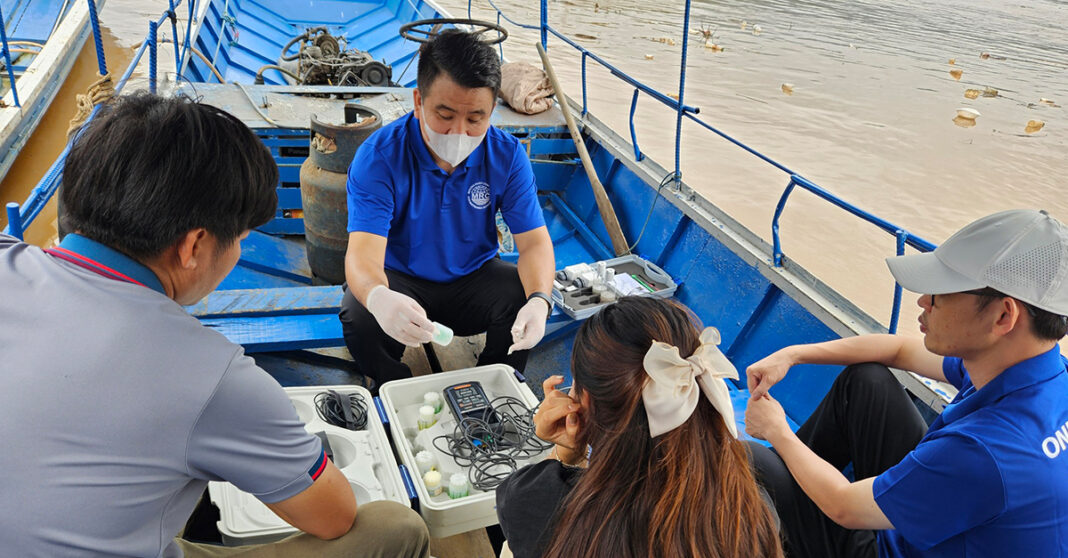The Mekong River Commission (MRC) has confirmed arsenic contamination exceeding international safety standards across transboundary sections of the Mekong and Kok Rivers, affecting Laos, Myanmar, and Thailand.
MRC’s 3 June assessment revealed arsenic levels of 0.025 milligrams per liter, 2.5 times the World Health Organization (WHO) safety threshold of 0.01 milligrams per litre, at four of five sampling sites along the Myanmar-Lao-Thai border region.

The MRC tested five locations: C1 at the upper Myanmar-Lao border, C2 slightly south of the Golden Triangle at the Myanmar-Lao border, C3 at the Chiang Saen (Thailand)-Lao border, C4 near Sob Kok at the Thai-Lao border, and C5 between Thailand’s Chiang Khong district and Laos’ Houayxay district.
The contamination was detected at sites C2 through C5, while the upstream site C1 remained within safe limits. This pattern suggests the contamination source lies between sites C1 and C5.
Thailand’s Pollution Control Department corroborated these findings in May, recording identical arsenic levels of 0.025 milligrams per litre in the same river section. The contamination is suspected to originate from rare earth mining activities in Myanmar’s United Wa State Army territory, according to the Thai authority report, flowing downstream through the Kok River tributary before entering the Mekong rivers.
The Kok River, which flows through several districts in Thailand’s Chiang Mai and Chiang Rai provinces, has been facing widespread environmental issues in recent months primarily due to these upstream mining activities.
The MRC has classified this as a “moderately serious” transboundary environmental issue affecting all three countries, with the cross-border nature of the pollution highlighting the need for regional cooperation.
The detection of arsenic along the Lao-Myanmar border further indicates possible cross-border pollution sources affecting the entire river system. In response, MRC is coordinating with national agencies to enhance joint monitoring and data sharing across the affected countries.
A regional stakeholder meeting will convene 21 July in Chiang Rai province, Thailand, bringing together relevant authorities to assess the situation and develop collaborative solutions for addressing the contamination crisis.



